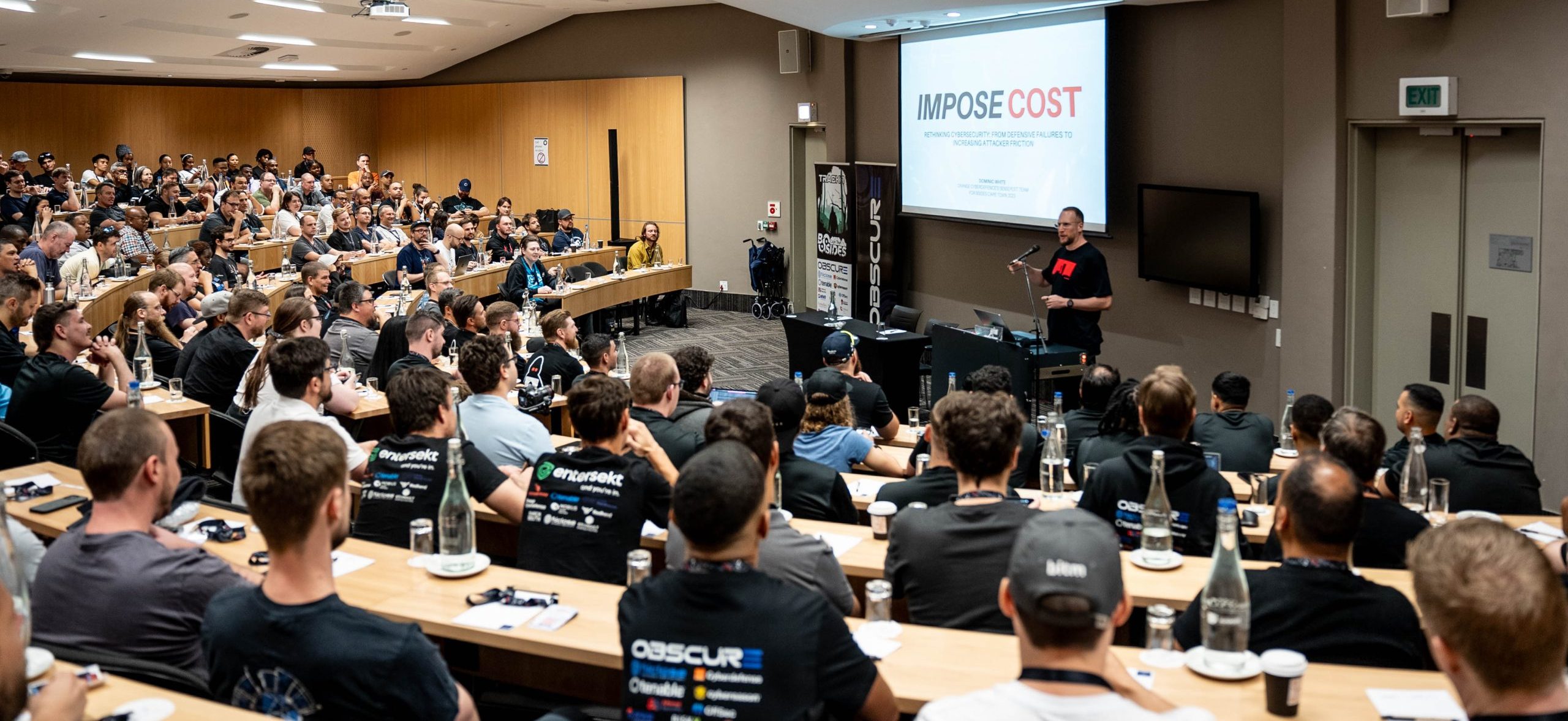Submitting a talk to BSides Joburg is an excellent opportunity to share your knowledge, experiences, and research with a vibrant and passionate infosec community. However, with limited speaking slots available, a well-crafted CFP proposal is essential to stand out. A strong proposal isn’t just about having a great idea; it’s about presenting it clearly and convincingly to show its relevance to the audience. The key elements of a successful submission include a compelling title, a well-written abstract, and a detailed description. Below, we break down each component and offer practical advice to help your proposal get noticed.
Writing a Title That Grabs Attention
Your title is the first thing the selection panel and attendees will see, so it needs to be both engaging and informative. A good title strikes a balance between clarity and intrigue—it should hint at the topic while making people want to learn more. Avoid overly vague titles like “Security Trends in 2025” or overly complex ones filled with jargon that only a niche audience would understand. Instead, go for something concise and direct, such as “Breaking In: A Red Team’s Guide to Modern Perimeter Defenses” or “From Zero to Hero: Exploiting Misconfigurations in Cloud Environments.” A great title sets the stage for your talk and immediately conveys why it matters.
Crafting a Clear and Concise Abstract
The abstract serves as a short summary of your talk, usually around 3-5 sentences long. Its purpose is to provide a quick snapshot of what attendees will learn and why they should care. Since BSides audiences range from junior to senior professionals, avoid fluff and marketing language—this is a technical conference, not a sales pitch. Clearly state the problem you’re addressing, why it’s relevant, and what insights or solutions you’ll provide. For example:
“Cloud security is a moving target, and misconfigurations remain one of the biggest attack vectors. In this talk, we’ll explore real-world case studies of cloud breaches, analyze common mistakes, and demonstrate how attackers exploit these gaps. By the end, attendees will walk away with actionable defense strategies to harden their environments.”
This abstract works because it tells the reader exactly what they can expect: real-world examples, practical takeaways, and a technical deep dive.
Writing a Strong, Structured Description
The description is where you provide more depth about your talk. It should break down the topic, outline key discussion points, and clarify what the audience will take away. Think of it as your chance to convince the selection panel why your talk belongs at BSides Joburg. A good description typically includes:
- Introduction to the topic – Set the stage with some context. What problem are you addressing? Why is it important in today’s security landscape?
- Technical Deep Dive – BSides audiences appreciate substance. Outline the key points you’ll cover, such as attack techniques, defenses, tools, or methodologies.
- Real-World Relevance – If possible, include case studies, proof-of-concept demos, or research findings to show practical application.
- Key Takeaways – Clearly state what attendees will learn. Will they walk away with a new tool, technique, or methodology they can apply?
For example, a strong description for a cloud security talk might look like this:
“In this session, we’ll dissect common cloud misconfigurations that attackers exploit, such as overly permissive IAM roles, exposed S3 buckets, and insecure API gateways. We’ll analyze real-world breach scenarios, demonstrating how these weaknesses are discovered and weaponized. Using live demos, we’ll walk through practical detection and mitigation strategies that defenders can implement today. Whether you’re a blue teamer securing cloud environments or a red teamer looking to sharpen your exploitation skills, this talk will equip you with hands-on knowledge to level up your security game.”
This description works because it clearly outlines the technical depth, real-world relevance, and key takeaways, making it clear why the talk is valuable.
Final Thoughts: Avoiding Common Pitfalls
When submitting your CFP, remember that BSides Joburg is about technical knowledge-sharing, not product promotion. Avoid any hint of a sales pitch, vendor bias, or vague high-level discussions with no practical application. Instead, focus on well-researched, actionable content that benefits the audience. If you’re unsure about your proposal, get feedback from peers before submitting. Finally, proofread your submission—clear, professional writing makes a strong first impression.
A well-crafted CFP proposal isn’t just about getting a slot at BSides Joburg—it’s about contributing meaningful insights to the infosec community. Take the time to refine your title, abstract, and description to ensure your talk stands out. With a solid proposal, you’ll not only increase your chances of being selected but also set the stage for an engaging and impactful presentation.




